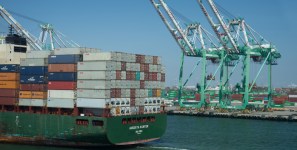Port Strike Suspended Until January 15, 2025, ILA – USMX Negotiations Continue with Automation a Key Sticking Point
“As of October 3rd, the ILA port strike has been suspended and a tentative agreement between the ILA and USMX on wages has been agreed to. The Master Contract extension is until January 15, 2025.
Read also: A Prolonged Port Strike Narrowly Averted, for now
From now until January, the two parties will return to the bargaining table to continue their negotiations. Automation remains a key sticking point.
At Magaya, as a global provider of logistics and supply chain automation software, we understand the value of automation for the global shipping industry, and know that the benefits outweigh the concerns for all parties involved with moving cargo.
It is of course only natural for workers to worry about the impact of automation on their jobs.
No one wants to see hard-working Americans face job uncertainty due to technological advancements. However, we know that no one is going back to shipping freight in barrels, boxes and sacks without shipping containers, and technology is going to be put back in the bottle.
In my experience, freight automation drives many important advantages for people, such as safety, reducing costly mistakes, enhancing a person’s job experience, and reducing repetitive, strenuous tasks, and most importantly the creation of new job opportunities with upskilling and reskilling.
For example:
- Automation improves safety by reducing human error, particularly in high-risk tasks such as cargo handling and equipment operation – Automated cranes in ports minimize accidents.
- The rise of automated warehouse systems has led to a demand for skilled technicians and data analysts to manage and optimize these operations. The shift opens doors for workers to grow in areas such as robotics maintenance and supply chain analytics.
The balance between technology and human input ensures that automation complements, rather than replaces, human expertise, enhancing both operational efficiency and the workforce’s capabilities.”





Leave a Reply